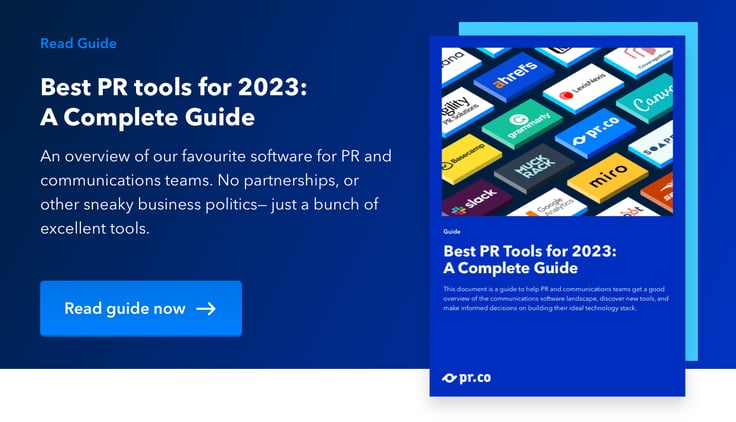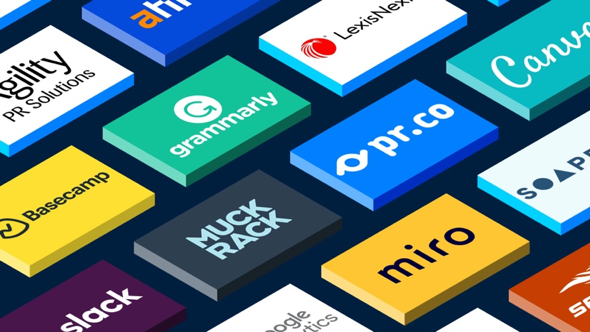If it wasn’t metaphorical, the buzz around Artificial Intelligence (AI) would be deafening. From tabloid attention headline grabbers like Will this super intelligent computer steal my job... and yours? to the employee fired for claiming that Google’s chatbot had become sentient, AI continues to capture our imagination and spark our deepest fears. But how is AI really shaping our storytelling and how will it impact PR?
In this blog, we explore how AI copywriting works and if human copywriters are still essential to effective story-telling.
What is Artificial Intelligence?
Unless you’re an eccentric that prefers typewriters and carrier pigeons to get your message out there, you are already using AI to improve your writing. Just as spell checkers and Grammarly haven't replaced the need for editors, the latest AI copywriting tools won’t do you, or your team, out of a job.
To understand why not, it’s important to first understand what AI is and how it relates to copywriting.
Defining AI
The term Artificial Intelligence, first coined by John McCarthy in the 1950s, is defined by Merriam Webster as;
“1. A branch of computer science dealing with the simulation of intelligent behavior in computer
2. The capability of a machine to imitate intelligent human behavior”
This broad definition encompasses everything from the software that helps your doctor make a diagnosis and treatment plan to the speech recognition technology that powers tools like Siri.
Machine learning
Machine learning is a branch of artificial intelligence, first described by Alan Turing in the 1950s, which focuses on the use of algorithms to process data to continually learn. In the context of copywriting, this means that algorithms are able to draw on existing texts to create new, original content. This process is known as “Natural Language Generation” (NLG). An important distinction, because it's NLG that is ruffling feathers in the copywriting community.
How AI copywriting tools can help you
Find new angles and speed up research
One of the biggest advantages of using NLG tools is their ability to deliver relevant information to you with a single click. AI copywriting tools have ‘read’ more of the internet than you can in your entire lifetime. This means that when you’re writing an article for a niche industry, they can bring you buzzwords and arguments from an obscure subreddit that you don’t even have the time to find.
Whilst this might not make much sense at first glance, it will help you discover angles for stories, articles and pitches that you hadn’t even considered. In this way, NLG can provide a great starting point for your research, especially if you are freelancing in an industry you know little about or are dabbling your toes in a new direction.
Banish writer’s block
If I had to summarize the benefits of AI copywriting in one word it would be speed.
In addition to streamlining your research process, AI can produce copy far faster than you can. Once you input your basic idea, it can create a 1000 word blog for you in a couple of seconds.
Having played around with Jasper.ai, Chat GPT and even Canva’s Magic Write for the purpose of this article however, it’s clear to me that they can’t yet produce copy that merits instant publication (phew). Instead, they can force you to abandon your perfectionism, and therefore writer’s block, providing you with relevant copy that you can edit as ruthlessly as you need to.
No matter how agile and efficient your existing processes are, adding someone to your team is probably not going to lead to more or better work. So what can be done instead?
Way back in 1975, Fred Brooks found a solution to this conundrum: identify which constraints are keeping your team from achieving your goals. Then improve your processes until that constraint is no longer there, repeat the process for the next constraint. Fast forward to today and your best allies in this process are good software as service solutions (SaaS).
From planning our workflow to enhancing creativity and getting our message picked up by the right people, the power to transform your output is only a few clicks away.
An AI generated future
Unconvinced that these tools have their limits?
Take a look at this short story.
"It is 2073. Politicians are no longer held accountable for their actions. People feel powerless against the machine-run media, but they were also strangely content. The machines had made life easier by taking care of all the tedious work that humans used to do. Life goes on as normal, just without many (or any) pesky reporters asking questions they weren't supposed to ask anymore!”
Despite the grammar slip-ups and weak attempt at humor, it’s not a bad little doomscape. Of course, its premise was generated, in detail, by my brain — cheerful as ever. So, is this really what the future will look like? Why PR still needs human copywriters
Why PR still needs human copywriters
At the risk of sounding like a dutifully optimistic copywriter, PR is an innately human profession that requires human story tellers.
Empathy and creativity
At pr.co we firmly believe that PR is a relationship based profession. Good PR should be built on trust and grounded in good storytelling and empathy. Although NLG tools can greatly increase the speed and accuracy of content creation, they cannot replicate the empathy, emotive storytelling and creativity necessary to capture the interest of your audience.
Human experience is essential in guiding your narrative with emotional depth, nuance, and personality — all elements that no algorithm can provide on its own.
Cultural bias and nuance
As a machine learning technology, NLG can only produce copy based on existing texts and patterns. Unfortunately the unjust nature of our society is integral to the texts freely available on the internet and artificial intelligence is learning how to ‘think’ from racist, sexist, ableist and otherwise discriminatory data.
Human copywriters have an important role in not only editing the bias out of any copy they generate with AI tools, but in creating content that reflects the values they wish to see in the world and in doing so contributing what they can to the data that machines will learn from in the future.
Control your narrative
As a PR pro, you know that copywriting plays a key role in your brand narrative — it often sets the first and lasting impression that your stakeholders have of your brand. So, as AI churns out more and more content, it will become incredibly important to ensure it has accurate information about your brand. And who better to write that than you?
Not only can you tell a more emotive, impactful story than your NLG counterparts, your copy will be used to inform AI generated content about your brand.
Why PR professionals are more important than ever
Journalists are already using AI to gather, produce, and distribute news. They are even using machine learning to map “news deserts”, a fate you never want your brand to endure.
To respond, PR professionals need to work with AI.
As journalists increasingly rely on AI-powered content generators and search engines, you also need to ensure that the right information is available for their algorithms to crawl through. The nature of AI means that PR is needed more than ever — to extensively publish truthful, valuable and transparent information. We believe the rise of AI will be followed by the rise of brand journalism — and we’re here for it.
Harriet has 8 years of marketing experience at NGOs and in the public sector. She's a marketer with a strong ethical compass, and sharp pen. Harriet worked as pr.co's Head of Copy and Communications in 2022 and 2023.. Connect on LinkedIn or send an email







